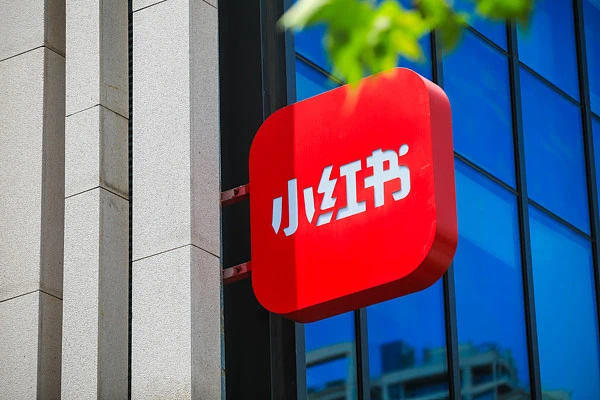
Xiaohongshu, the Chinese social commerce platform known for its content-driven user community, is taking its commercialization efforts a step further by venturing into the sprawling and complex offline lifestyle services sector.
On October 30, Xiaohongshu held its annual “Lifestyle Services Industry Conference” at the W Hotel in Chengdu. The event spanned a wide range of industries including tourism, education, film and beauty, finance, medical aesthetics, healthcare, real estate, and online travel agencies (OTA). The conference underscored Xiaohongshu’s growing penetration in lifestyle services content and its ambition to link online influence with offline consumption.
According to the platform, search volume in Xiaohongshu’s lifestyle services category rose 37% year-on-year in 2025, while the number of posts increased 39% and content views grew 20%. Demand for niche lifestyle services is particularly strong: searches for film photography surged 1,350%, and interest in specialized training programsjumped 690% year-on-year.
“Users today expect more than just convenience—they seek experiences, surprises, and memories,” said Mi Yang, General Manager of Xiaohongshu’s Commercial Services and Luxury Sectors. “This is precisely Xiaohongshu’s unique advantage: connecting online content with real-world offline life. Traditional verticals such as tourism and education, as well as emerging categories like finance and wealth management, are all experiencing rapid growth.”
A Market with Significant Potential
The O2O lifestyle services market in China remains underpenetrated, offering ample growth opportunities. According to iiMedia Research’s 2025–2026 Competitive Landscape and Consumer Survey of China’s Local Lifestyle Services Market, China’s O2O market is projected to reach 3.89 trillion RMB in 2025, up 17.6% year-on-year, and is expected to approach 6 trillion RMB by 2028.
Internet-based local lifestyle services integrate offline resources—such as dining, housekeeping, repair, and laundry—through digital platforms, providing users with local business information, consumption guides, and merchant promotion channels. High-frequency service scenarios include cleaning, appliance repair, and laundry. The model emerged from the traditional service sector’s digitalization needs and accelerated after 2011 with smartphone proliferation and location-based services (LBS).
Xiaohongshu’s Approach to Offline Services
Xiaohongshu initially entered local lifestyle services via dining. By 2021, it added features like store POIs, hotel and homestay reservations, and by 2023, it launched group-buying deals for coffee and tea shops. In September 2025, Xiaohongshu unveiled the “Xiaohong Card”, a curated all-in-one pass for food, entertainment, and leisure. Cardholders can access curated store recommendations, universal in-store discounts, and exclusive event participation.
Based on real user discussions and merchant reputations, a selection of “Xiaohong Card Curated Stores” is highlighted with a special tag on store pages, maps, and related notes within the app.

Unlike platforms gradually embedding transaction functionality, Xiaohongshu still primarily generates revenue through advertising and lead generation. Some merchants enable in-app transactions, but cooperation models are largely merchant-driven, allowing users to complete bookings offline via phone or in-store consultations.
The platform began preparing for lifestyle services commercialization in 2023 and, by 2024, had begun standardizing service SPUs (Standard Product Units). Currently, Xiaohongshu’s lifestyle services sector features over 25,000 SPUs, laying the foundation for scalable advertising solutions.
“For a long time, our challenge was figuring out how lifestyle services could break into Xiaohongshu’s content-driven marketing ecosystem,” Mi Yang said. Xiaohongshu defines “content-driven ads” as a third category of performance advertising—positioned between traditional brand ads and direct performance ads—designed to deliver both brand exposure and long-term conversions.
Exposure, customer acquisition, and lead generation are areas where Xiaohongshu has an advantage. However, its strong community-based nature presents challenges for commercial traffic. “Xiaohongshu is a UGC platform with a dual-column layout and recommendation-driven search. Community atmosphere and content review standards are very high, making brand marketing challenging,” said the company’s CMO.
The lifestyle services sector, by contrast, remains in transition from non-standardized to standardized offerings, leaving space for innovation. In 2024, China’s top 100 lifestyle service chain enterprises generated 319.47 billion RMB in revenue, a 7.5% increase from 2023, with 252,000 total stores, up 27.9% year-on-year.
Services range from bathhouses with e-sports, self-service pool halls, and interest classes, to Hanfu-themed travel photography and interactive mystery games at tourist attractions. Meituan categorizes such businesses as service retail, projecting a 2024 market size of 7 trillion RMB but noting that digitalization is only 9%, highlighting substantial growth potential.
Since 2024, Meituan has expanded into over 200 service sectors, partnered with 6.3 million merchants, and achieved 77% year-on-year growth in orders. JD.com leverages its supply chain expertise to empower hotels via AI/robotics integration and corporate services, while Taobao dominates on-demand retail, with daily orders on Taobao Flash Sale and Ele.me exceeding 80 million. Platforms such as Douyin and Kuaishou are also investing heavily, intensifying competition.
As a later entrant, Xiaohongshu must carve a unique path amid fierce competition. The platform is optimizing content relevance to convert vague searches into clear demand signals. Lead Streaming, currently in testing, aims to improve downstream conversion efficiency.
Service consumption is inherently experiential. Users evaluate not just the service offered, but the experience itself. Xiaohongshu’s strength lies in leveraging authentic user feedback and content narratives to connect brands with potential customers.
Yousi, General Manager of Xiaohongshu’s Commercial Marketing Platform, emphasized: “Non-standardized services, reputation-driven decision chains, and high content production costs require visibility. We help brands establish natural, authentic connections with users so that good business grows organically.”
By integrating its UGC community, content-driven ecosystem, and offline lifestyle services, Xiaohongshu is positioning itself as a major player in China’s expanding O2O market, potentially capturing a significant share of the multi-trillion RMB service retail sector over the coming years.
更多精彩内容,关注钛媒体微信号(ID:taimeiti),或者下载钛媒体App

